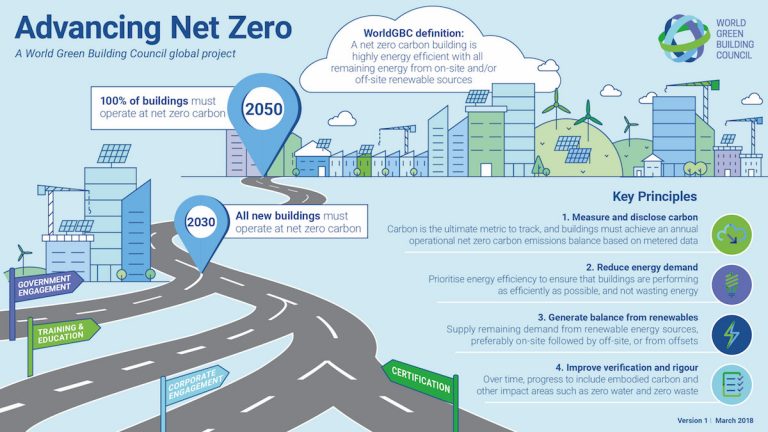This straightforward graphic from the World Green Building Council outlines the organization’s ambitious drive to advance net zero in very simple terms.
With a goal that 100 percent of all buildings operate at net zero by 2050, WorldGBC’s “Advancing Net Zero” calls for better tracking and verification of building performance. Not surprisingly, it suggests that buildings meet net zero by balancing reduced energy demand with renewable sources “preferably on-site followed by off-site, or from offsets.”
“Zero energy” — as certified by the International Living Future Institute and tracked by the New Buildings Institute — has a slightly narrower definition of acceptable energy sources. Under that regime, buildings are only recognize as “zero energy” if all their renewables come from onsite or offsite sources.
According to the organization (which is based in the United Kingdom), “11 Green Building Councils have committed to developing net zero certification schemes in 2018/2019, with 5 already launched as of March 2018. Whilst certification is recognised as an important tool to increase awareness and drive uptake, not all GBCs administer certification schemes. Other pathways of action include engagement with corporate members and government, and developing industry capacity through training and education activities.”
For more on the WorldGBC’s definition of net zero, click here. And here’s more information about the global Advancing Net Zero program. The infographic can be freely downloaded here.



